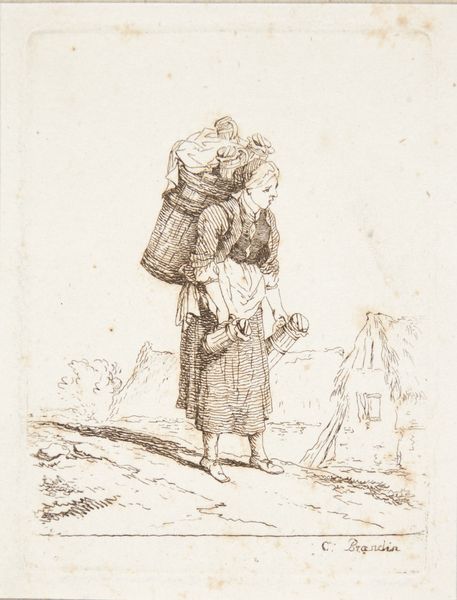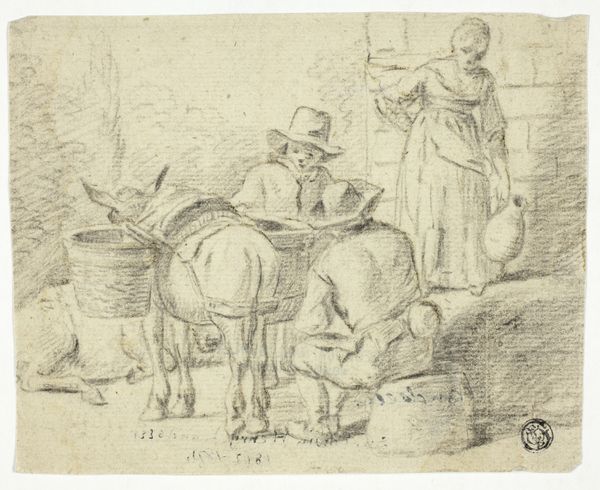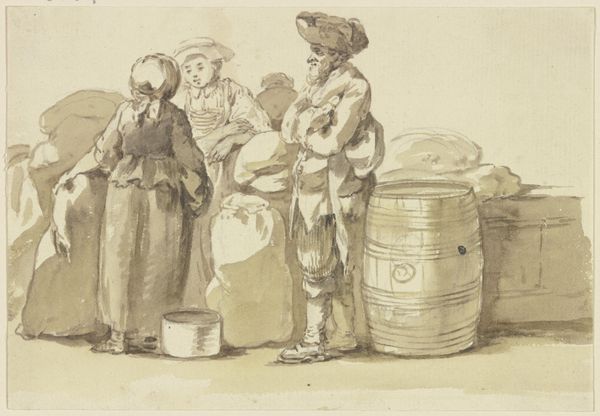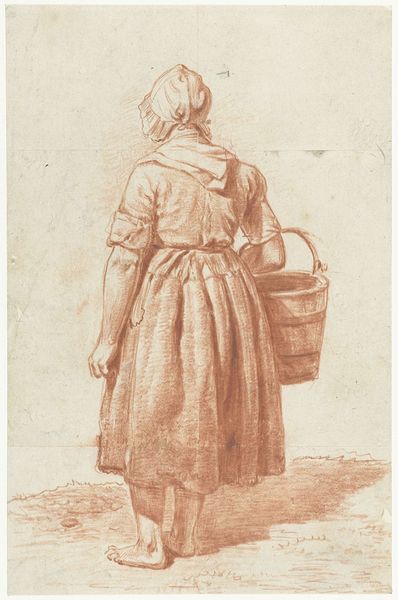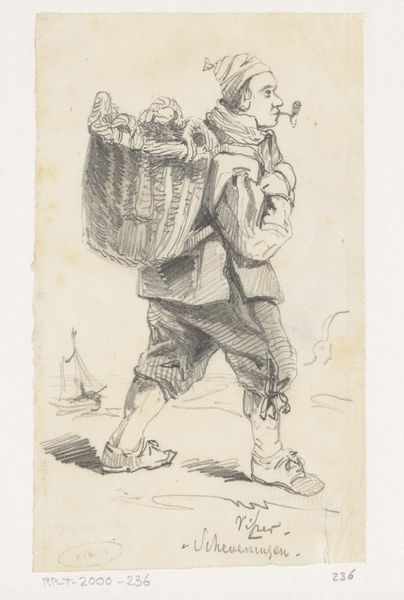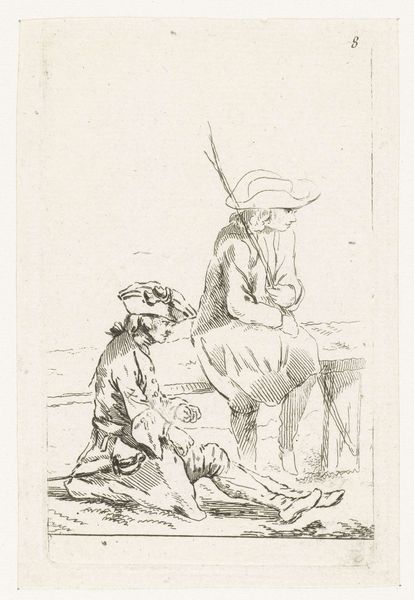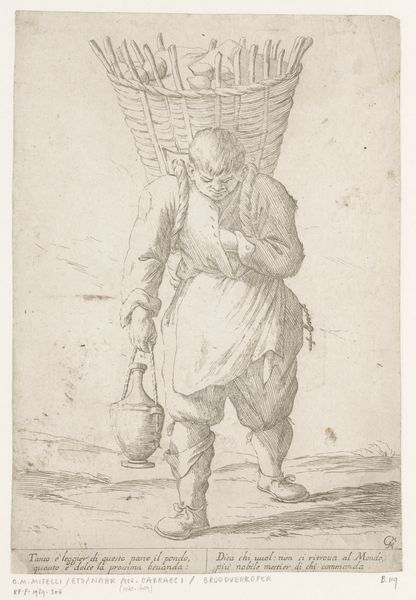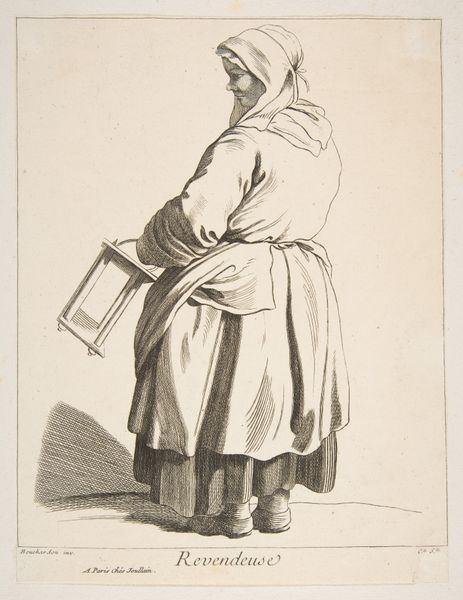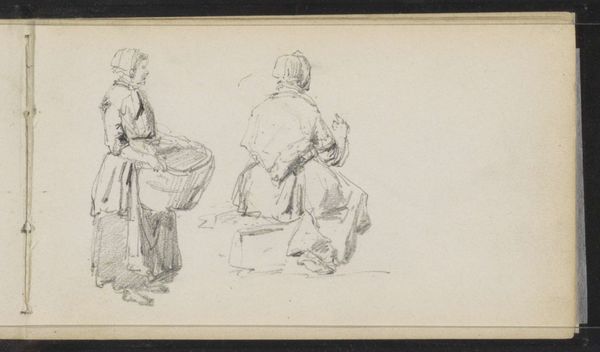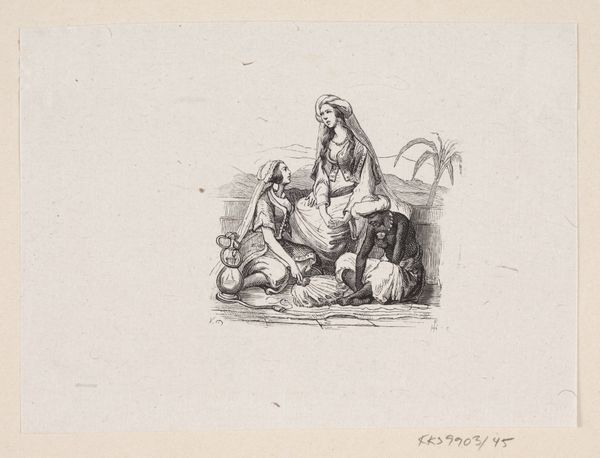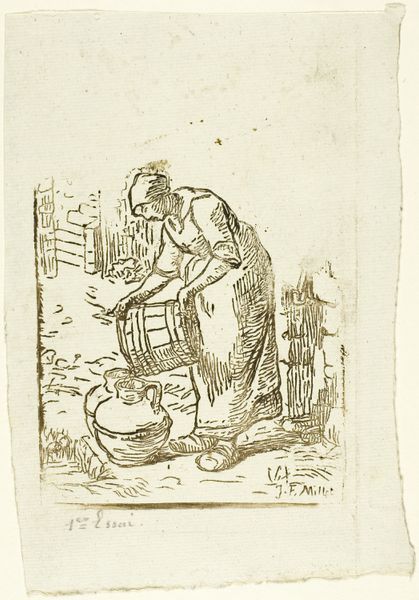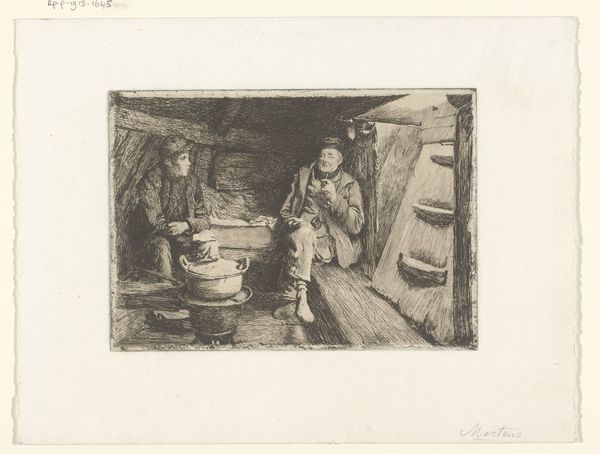
Twee kinderen, die een slee met een mand met hout voortslepen 1790 - 1852
0:00
0:00
drawing, paper, pencil
#
portrait
#
drawing
#
pencil sketch
#
figuration
#
paper
#
child
#
romanticism
#
pencil
#
genre-painting
Dimensions: height 208 mm, width 245 mm
Copyright: Rijks Museum: Open Domain
Curator: Let’s take a look at Pieter Christoffel Wonder’s “Two Children Pulling a Sled with a Basket of Wood,” dating roughly between 1790 and 1852. It’s a pencil drawing on paper. Editor: My first impression is one of weariness. There's a softness to the shading, yet the subject matter evokes a harshness. It’s all so muted, almost as if filtered through memory. Curator: The artist truly captured a sentiment, a mood, I would say, evoking some genre paintings characteristics that invite sentimentality. But I would also suggest, perhaps against it, how the artist used line, tonal variation, and subtle light-and-shadow play to direct your gaze? The overall construction, I feel, invites to contemplate the social status of these children. Editor: Certainly. And look how the children are framed: hunched, burdened, but undeniably human. We cannot ignore how it relates to social commentary prevalent during Wonder's time, mirroring depictions of peasant life and children in art serving didactic or moralizing roles. Are these children romanticized, or simply used as tools to generate sentimental reactions for societal critique? Curator: A key feature here is the simplification of form. Note the textures - from the rough-hewn basket to the implied weight of the wood – each element relies on an economy of lines. Look, there are strokes that could be almost abstracted on their own. I want to focus on that very refined sense for geometrical rigor across textures here. Editor: The use of such modest materials also grounds the image. A pencil drawing lacks the bombast and permanence associated with oil painting, but there is an honesty, maybe? This invites viewers to reconsider how and why everyday activities are imbued with a greater significance than expected. Curator: I concur completely. The contrast he creates using light and shadow with simple materials helps create depth, suggesting so much emotional complexity despite its straightforward depiction of children’s labor. Editor: Exactly. By viewing, and analyzing it closely we found that the piece exists not in isolation, but it creates something bigger as a bridge to social realities.
Comments
No comments
Be the first to comment and join the conversation on the ultimate creative platform.

